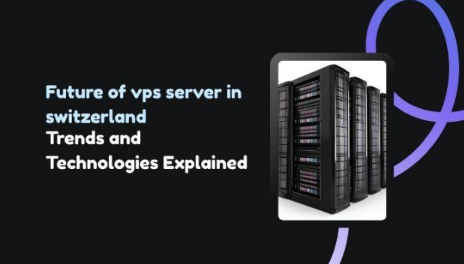At the heart of PeopleSoft’s robust framework is PeopleTools which is an essential collection of administrative and development software. Of these, PeopleTools ATT (Application Technology Tools) stands out as a complete toolkit designed for administrators and developers working in PeopleSoft. PeopleSoft environment.
This guide is intended to guide you through the key elements that comprise PeopleTools ATT, explain how it can help with application development and offer useful tips for those who wish to maximize its potential.
What is PeopleTools ATT?
PeopleTools ATT describes the suite of tools in Oracle’s PeopleTools environment, which are specially designed for development of applications customizing, integration, and customization. These tools enable developers to develop scalable apps or modify existing modules and integrate third-party applications without the need to modify the basic PeopleSoft code.
The primary objective the main goal PeopleTools ATT is to streamline development and decrease the amount of time and effort needed to add new features into PeopleSoft applications.
Core Components of PeopleTools ATT
1. Application Designer
Application Designer is the main interface for development in PeopleSoft. It offers a graphic environment for developers to create and manage definitions like:
- Records
- Pages
- Components
- Menus
With Application Designer users can develop custom applications or expand existing modules. This tool lets you develop using metadata-driven development that ensures consistency in design and less maintenance.
2. PeopleCode
PeopleCode is an object-oriented language utilized in PeopleTools. It allows developers to create scripts to support business logic and workflow controls, validations as well as manipulating data.
The most notable features of PeopleCode include:
- Integration with Application Designer
- A trigger-driven execution (e.g., FieldChange, SavePreChange)
- Modular programming support, using libraries and functions
PeopleCode improves the flexibility of PeopleSoft by allowing users to automate processes and create complicated logic across different applications.
3. Application Engine
Application Engine is a powerful batch processing tool that lets developers run complicated business functions in a regulated and planned manner. It was designed to handle high-volume data processing. It is extensively used for:
- Jobs in batch
- Transformation of information
- Report generation
- Data imports/exports
Application Engine programs can be designed using Application Designer, incorporating SQL, PeopleCode, and conditional logic that automates critical business processes.
4. Integration Broker
Integrator provides real-time communications in data transfer between PeopleSoft and other systems. It is compatible with the use of both SOAP and REST-based Web Services which makes it an indispensable tool to integrate modern technology.
Through Integration Broker you will be able to:
- Receive and send messages from third-party systems
- Set up messaging models for publish/subscribe
- Connectors can be configured for different protocols.
This allows for an easy and secure connection between PeopleSoft and other enterprise applications.
5. Component Interfaces (CI)
Component Interfaces permit external applications to connect with PeopleSoft components in a programmatic manner. This feature is vital for data integration, particularly when it comes to automatic information entry as well as systems-to-system transfers.
CI ensures that the business logic embedded into components (validations and defaulting, etc.) is followed and data entry is reliable and secure.
6. BI Publisher
the BI Publisher is Oracle’s report-making tool, which is integrated into PeopleSoft. It allows users and developers to create stunning reports with data directly sourced through PeopleSoft queries.
BI Publisher is compatible with:
- Rich formatting using RTF templates
- Export to PDF Excel HTML and more.
- Data merging from many sources
It makes it easier to create professional reports without requiring complex coding.
Benefits of Using PeopleTools ATT
Enhanced Productivity
PeopleTools ATT enables rapid development and deployment of customized solutions, which reduces the time needed to launch new business needs.
Seamless Integration
Utilizing tools such as Integration Broker and Component Interfaces developers can seamlessly connect PeopleSoft into other business systems, such as cloud platforms as well as third-party vendors.
Maintainability and Scalability
Working within using the PeopleTools Framework, customized applications become simpler to maintain and update. Developers can follow Oracle’s best practices to ensure compatibility with the upcoming PeopleSoft versions.
Reduced Custom Code
Through metadata-driven development as well as reusable components developers can create robust applications using only a few lines of code.
Installing and Configuring PeopleTools ATT
In order to use PeopleTools ATT effectively, ensure that your PeopleSoft environment is correctly set up. Here’s a brief outline of the steps to take:
1. Install PeopleSoft Environment
Installation of the basic PeopleSoft software and the database with Oracle’s approved tools for deployment. It typically includes:
- Setting up the PeopleSoft Image (PI)
- In the process of creating the PeopleSoft database
- The installation of the PeopleTools client
2. Configure Application Server and Web Server
Install the Tuxedo-based application server as well as set up the PeopleSoft webserver (typically WebLogic or IBM WebSphere). These servers are responsible for processing of the business logic as well as presentation layers, respectively.
3. Launch Application Designer and Connect
Utilize your PeopleTools client to launch Application Designer and connect to your database environment. From here, you are able to start developing and modifying your applications with applications created using the ATT tools.
Best Practices for PeopleTools ATT Development
- Use the Oracle’s Coding Standards: Always utilize Oracle-recommended names and codes to ensure consistency.
- Modifications to Documents Keep a detailed document of any modifications that are needed to facilitate future updates.
- Test in the Sandbox Environment: Always try out changes in a non-production setting in order to avoid disruption to business.
- Use Version Control Make use of version control tools to organize PeopleSoft projects and work with teams working on development.
- Utilize Delivered Features Before you customize, make sure to check whether the functionality delivered meets the need to minimize any the effect of any future upgrade.
Final Thoughts
PeopleTools ATT can be described as an extremely powerful set of development tools that play crucial roles in the development, customization as well as maintenance for PeopleSoft applications. When you’re working on a new module, connecting with other systems and automating processes in business PeopleTools ATT provides everything you require to be successful.
Understanding its components and using best practices can help companies make the most of your PeopleSoft investment, decrease the cost of development, and create the business value quicker.
You may also like









